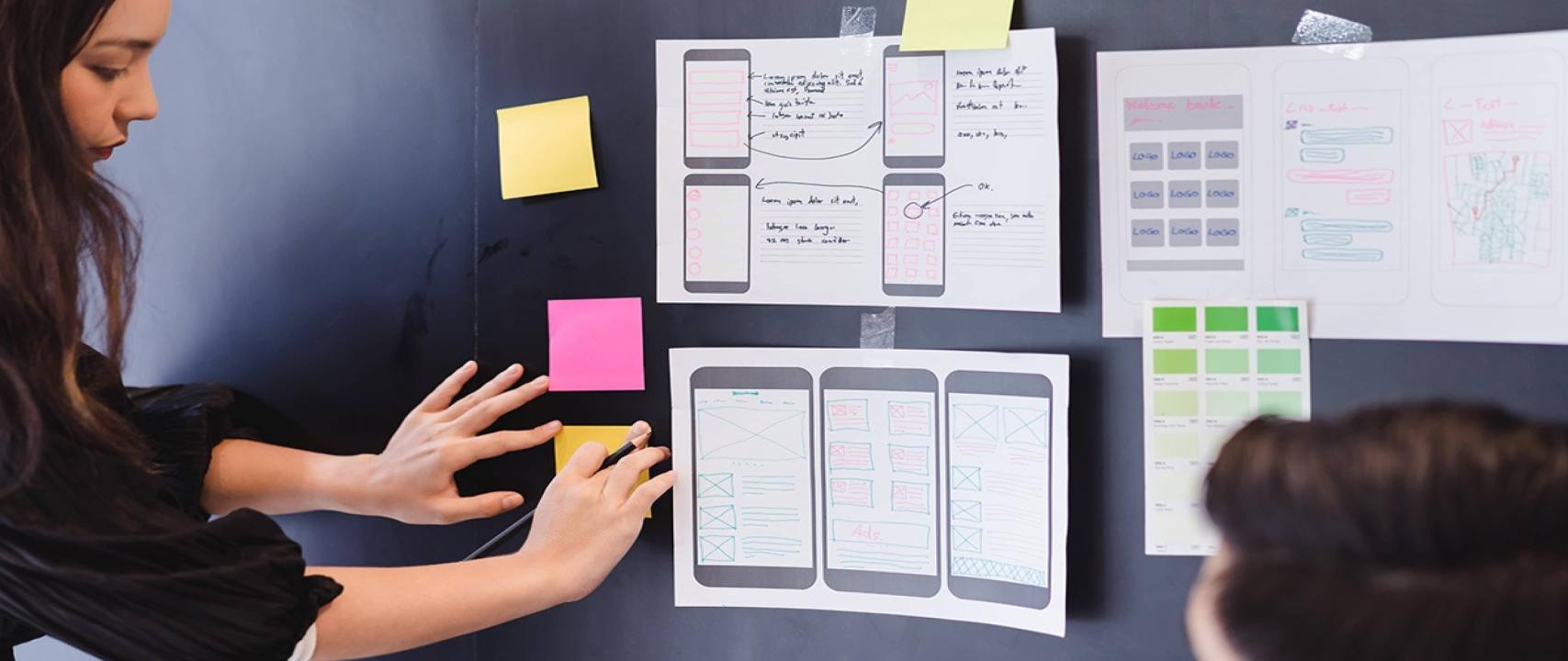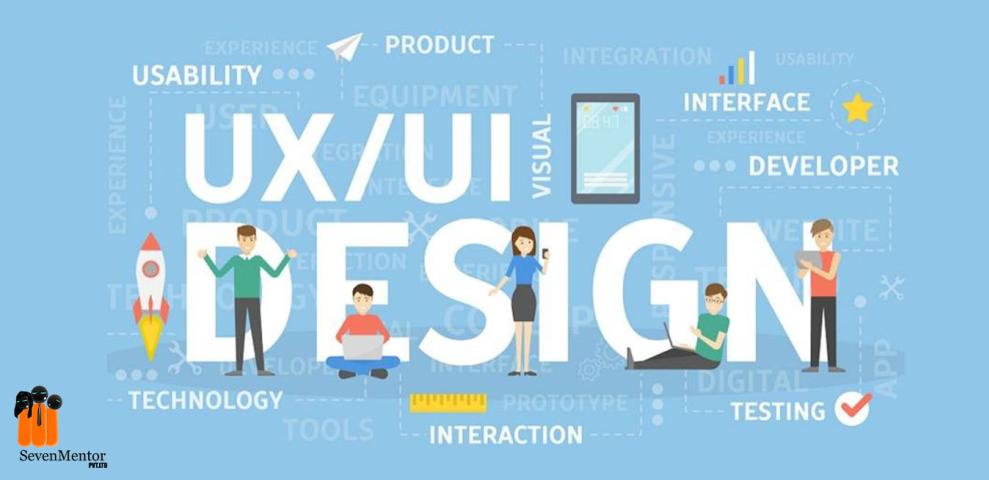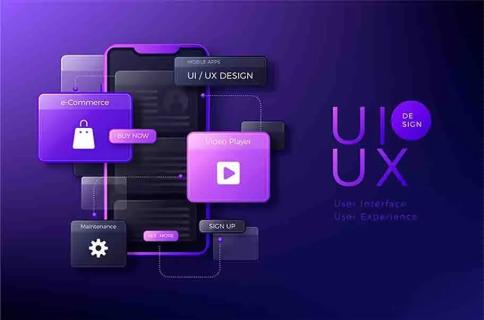In today's digital-first world, creating user-friendly, aesthetically pleasing, and functional designs for websites, apps, and digital products is more crucial than ever. At the heart of this process are UI/UX designers, professionals who specialize in crafting seamless user experiences and visually appealing interfaces. These designers play a significant role in UX UI design services, helping businesses create engaging products that are intuitive and enjoyable to use. But what exactly does a UI/UX designer do? In this article, we’ll explore their roles, responsibilities, and the importance of their work.
Understanding the Basics: What is UI/UX?
Before delving into the daily tasks of a UI/UX designer, it’s important to understand the distinction between UI (User Interface) and UX (User Experience).
What is UX Design?
UX design focuses on the overall experience a user has when interacting with a product or service. It is concerned with the entire process of product development, from branding to usability and functionality. UX designers work to ensure that every aspect of the user journey is smooth, efficient, and enjoyable. This involves extensive research, wireframing, and prototyping to ensure the product meets user needs.
What is UI Design?
UI design is more concerned with the visual elements of a product, such as colors, typography, buttons, and layout. UI designers create interfaces that are not only aesthetically pleasing but also easy to navigate. The primary goal is to ensure that the product's interface visually communicates the brand and allows for a seamless interaction.
When combined, UX UI design services focus on both the experience and the visual presentation, ensuring that digital products are both functional and visually appealing.
Responsibilities of a UI/UX Designer
UI/UX designers wear many hats, often balancing between research, design, prototyping, and collaboration with other team members. Let’s break down their key responsibilities:
1. Conducting User Research
One of the first steps in the design process is understanding the needs, behaviors, and pain points of the target users. UI/UX designers conduct thorough user research to gather insights that will inform their design decisions. This involves:
Surveys and Interviews: Designers collect direct feedback from users through interviews, focus groups, and surveys.
Usability Testing: By observing how users interact with a prototype or existing product, designers identify areas that need improvement.
Competitive Analysis: Analyzing competitors’ products helps designers identify trends and gaps that can be leveraged for their own design.
By incorporating user insights into the design process, UX UI design services ensure that the final product is aligned with user expectations and needs.
2. Creating User Personas
Once the research is complete, the next step is to develop user personas. These are fictional representations of the target audience, based on the research findings. User personas help designers keep the user at the center of the design process and ensure that the product addresses the needs and preferences of the target audience.
For example, a UI/UX designer working for an e-commerce platform might create a persona for a busy professional who values quick, efficient shopping experiences. This persona will guide the design decisions to create a more user-centric platform.
3. Designing Wireframes and Prototypes
With research and personas in hand, UI/UX designers move on to the creation of wireframes and prototypes. These tools allow designers to map out the structure and flow of a website or app before diving into the final design.
Wireframes: These are low-fidelity representations of the layout and structure of a product. They focus on functionality rather than visual design, allowing designers to define how different elements will be arranged.
Prototypes: A prototype is an interactive model of the product that allows users to test the flow and functionality. Prototypes are crucial for gathering user feedback and making iterative improvements.
The creation of wireframes and prototypes is a key component of UX UI design services, allowing designers to refine their ideas and ensure usability before full-scale development begins.
4. Visual Design and Branding
Once the wireframes and prototypes are approved, the next step for a UI/UX designer is to focus on the visual design. This involves defining the product’s color scheme, typography, icons, and imagery. The designer ensures that all these elements work together harmoniously to create a cohesive and aesthetically pleasing user interface.
In addition, UI/UX designers work closely with branding guidelines to ensure that the visual design aligns with the overall brand identity. This is particularly important in UX UI design services for companies that want their product to reflect their brand values and messaging consistently.
5. Designing for Accessibility
A crucial but often overlooked aspect of UI/UX design is accessibility. UI/UX designers ensure that their designs are inclusive, allowing people with disabilities to use the product with ease. This might involve:
Ensuring text is readable for users with visual impairments.
Providing keyboard navigation for users with mobility issues.
Designing interfaces that are easy to use for people with cognitive disabilities.
Incorporating accessibility into UX UI design services not only helps create a more inclusive product but also broadens the potential user base.
6. Collaboration with Developers
Once the design is complete, the role of the UI/UX designer doesn’t end. They collaborate closely with developers to ensure that the design is translated into code accurately. This involves:
Providing Design Specifications: Designers supply developers with the necessary files, including the visual assets, >
Design Reviews: Throughout the development process, UI/UX designers review the product to ensure that the visual and functional aspects align with their original design.
Effective collaboration between designers and developers is essential for the successful delivery of UX UI design services.
7. Continuous Testing and Iteration
Even after a product is launched, the work of a UI/UX designer is not finished. Post-launch testing is critical to understand how users are interacting with the product in the real world. Through ongoing usability testing and A/B testing, designers can gather data on user behavior and make iterative improvements to the design.
For example, a UI/UX designer working on an app might test two different versions of a call-to-action button to determine which one performs better. These small, data-driven adjustments ensure that the product continues to meet user needs over time.
The Importance of UX UI Design Services
Enhancing User Satisfaction
Investing in UX UI design services is essential for businesses looking to improve user satisfaction. A well-designed interface and seamless user experience lead to happier users, which in turn increases customer loyalty and retention.
Increasing Conversion Rates
UI/UX designers focus on optimizing user flows to make it easier for users to achieve their goals, whether it's making a purchase, signing up for a newsletter, or completing a task. Streamlined processes and intuitive designs can lead to higher conversion rates and greater profitability.
Reducing Development Costs
By focusing on user research and prototyping early in the design process, UI/UX designers help avoid costly errors during development. Identifying usability issues before the product goes live saves both time and money, making UX UI design services a valuable investment.
Conclusion
A UI/UX designer plays a pivotal role in creating products that are both functional and visually appealing. From conducting user research and developing personas to designing wireframes and collaborating with developers, these professionals ensure that every aspect of a product is designed with the user in mind.
Investing in UX UI design services not only enhances the user experience but also provides businesses with a competitive edge in today's digital landscape. Whether it’s increasing user satisfaction, boosting conversion rates, or reducing development costs, the impact of a skilled UI/UX designer can be transformative for any business.






